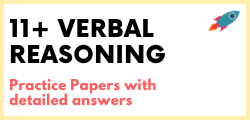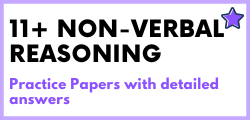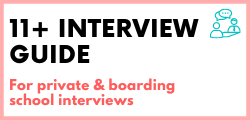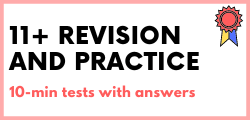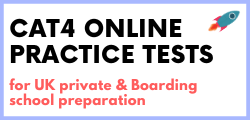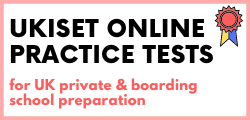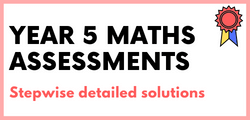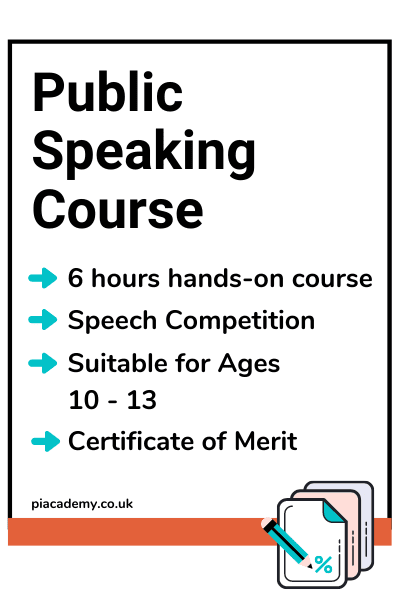Introduction to Public Speaking
Public Speaking is the act of speaking in front of a live audience. The speech may be made for several reasons; to thank, to inform, to persuade or to spur to action, or to entertain. The occasion for the speech may be formal – such as a conference – or informal, such as a birthday party or a wedding. Whatever be the occasion, effective Public Speaking demands a mix of verbal and non-verbal skills that need to be practised and polished.
Table of contents
- Introduction to Public Speaking
- Tip # 10: Structure Your Speech
- Tip #9: Practise But Don’t Memorise
- Tip #8: Use Visual Aids Wisely
- Tip #7: Check Out The Venue of Public Speaking
- Tip # 6: Maintain Eye Contact
- Tip # 5: Make It Personal
- Tip # 4: Use Body Language Effectively
- Tip #3: Grab Attention With Your Beginning
- Tip #2: Have a Forceful Ending
- Tip #1: Know Your Audience
Tips for public speaking pay to learn to speak well in public for many reasons. For one thing, it is an absolute requirement as one climbs up the corporate ladder. As one attains higher and higher managerial positions, it becomes more and more necessary to speak in public to various audiences. For another, tips for good public speaking skills make one a better communicator. One learns to drop bad speaking habits and adopts good ones. Also, speaking in public improves confidence, helping one to make sales pitches, handle conflicts at work and with friends, and appear for interviews.
Public speaking tips, which are often sought mostly by adults looking out for tips to overcome public speaking anxiety out of their fear to speak in public, help one overcome the anxiety associated with making a speech. The more one practises the better one becomes at handling the nervousness associated with this activity.
Now let's move on to the 10 tips for public speaking to become an outstanding orator.
# 10: Structure Your Speech
As a public speaker you must learn to structure your speech. Every speech has three main sections; the opening, the main body and the conclusion. Further free public speaking tips will tell you how to effectively use these sections. It also helps to structure the main body of the speech. This has many benefits. You become a more effective communicator, able to achieve the objectives of the speech. As a speaker, you also become better at recalling the main points of the speech, helping you speak effortlessly.
Thus you avoid the awkward pauses that occur while you try to remember what comes next in your speech. Your arguments also flow logically and take the audience along from one point to the next. This helps cement the ideas of the speech in the minds of the audience. The speech, therefore, becomes more memorable and thus, more effective.
Tip #9: Practise But Don’t Memorise
Practice, of course, is a very important part of the preparation for public performance. However, you should avoid trying to memorise the speech. Instead, remember the points of your speech. These should remember, be in logical order so that you remember them and the audience understands them. Then practise speaking about those points one after another. By watching public speaking tips videos, you may practise in front of a mirror or video camera or you may practise with a friend.
Of these, practising with a friend or group of friends is the most effective, since it gives you the feel of speaking to an actual audience. However, evaluate any feedback that you get carefully. Accept what makes sense but don’t dwell on negative feedback that doesn’t give you any actual benefit. At the same time, avoid getting a “swelled head’ over positive feedback. That may make you overconfident and you’ll be more prone to forgetting your points in front of the actual audience.
The effective practice lies in being able to recall the points of your speech effortlessly and being able to speak on them fluidly. Practising public speaking in front of a mirror or with the aid of a video camera helps you correct your body language. You can thus check if you tend to slump or have any nervous gestures or tics that will distract your audience.
Tip #8: Use Visual Aids Wisely
Visual aids are a great way to help audiences remember key points of your speech. However, you should avoid two most common public speaking pitfalls:
- Don’t write out your speech in the slides: Slides should contain only key points, preferably in picture form. These help you remember your main points as well as give the audience key images to remember what you convey. Writing out the speech is ineffective for two reasons; it breaks eye contact, and audiences do not like or remember large blocks of text.
- Don’t use fancy transitions and effects: Fancy transitions and animation effects are very good when a presentation is being made at a kiosk. They attract attention and get passers-by interested in the presentation. However, in a speech, they can be disastrous. For one thing, the audience’s attention will be more on the visual effects than on the speech. For another, the visual effect can actually prevent the audience from getting the point being made.
Tip #7: Check Out The Venue of Public Speaking
Whenever possible, check out the venue before you are to make your speech. Arrive a little early and check the following:
- The seating arrangements: Look for places where members of the audience may not be able to see you when you make your speech. You can ask the organisers to adjust the seating accordingly.
- Any distractions: Check if the fans and/or air conditioner make a noise or if there are visual distractions such as moving images being shown on a screen. While nothing can be done about noise from fans and air conditioners, you can request organisers not to display any moving images during your speech. Here’s a tip about noise from fans and air conditioners: audiences automatically tune out the sounds after a while. So, if possible, delay your speech for about a minute or so to let the audience get used to the sound.
- The public address system: Examine the microphones being used. Do a sound check to test what distance you should be from the microphone in order to be audible. Talk to the sound technician about any requirements you may have.
- The Audio-Visual equipment: If you are making a presentation, check if your laptop can effectively be plugged into the AV system. If the organisers have intimated that a laptop will be made available and you need to bring only a pen drive, check if the laptop can read and open your presentation.
Tip # 6: Maintain Eye Contact
Making eye contact is a very important tip for fear of public speaking and a significant part of a speech. Learn to sweep your gaze over the audience at just the right speed so that every member feels as if you are addressing them personally. Smile at those who seem to agree with you, bring them to your side. Avoid eye contact with those who seem aggressive or who seem to be shaking their heads in disbelief. Eye contact with them might lead to heckling and that is best avoided. A time will come when you will be sufficiently experienced to tackle hecklers but in the early stages, it is better not to antagonise them.
Tip # 5: Make It Personal
Liberally sprinkle your speech with personal anecdotes. This helps the audience feel you are “one of them” and you will actually receive positive energy from the audience. If you are sufficiently practised and confident, you may even get members of the audience to share their own personal experiences. This makes the presentation interactive and the members of the audience are more likely to agree with you and accept your message.
Learn to use humour effectively. Practise humour with your friends until you are able to handle it effectively. The biggest mistake you can make in using humour is to use it badly. Timing is a very important aspect of humour. Just the right pause before just the right punchline can make the difference between an amusing anecdote and a deadweight joke. Avoid ethnic humour at all costs. Stand-up comedians may use it but it doesn’t suit any other kind of presentation. By all means, make fun of yourself if you can handle it effectively. Audiences love a speaker who can laugh at himself or herself.
Tip # 4: Use Body Language Effectively
Make sure you stand erect. It projects confidence. Audiences who see the speaker as confident are more likely to be receptive to the speaker’s messages. If you have practised effectively, you will have eliminated or at least reduced some redundant body language. Modern public address systems (PA systems) give the speaker the advantage of being able to move around. If that suits your style, don’t hesitate to move out from behind the podium and address the audience more intimately.
Be careful, however, to ensure beforehand that the PA system can pick up your voice from different parts of the dais or stage. Also, be careful about feedback noise from the PA system. If you are holding a cordless mic or wearing a lapel mic, standing directly in front of a monitor speaker may cause the electronics to emit a high-pitched whistle.
If, as a previous tip has mentioned, you have arrived early enough to check out the venue, you should be able to identify troublesome spots on the stage. Don’t hesitate to mark those spots with tape so that you avoid them during your speech. Also, be careful not to come in the way of projection from the Audio Visual system.
Tip #3: Grab Attention With Your Beginning
The beginning of your speech is what some experts call the “Ho Hum” stage. It is the stage where your audience is not yet ready to listen to your speech. Their minds may be on the previous speech, some distraction at the venue, or some experience on their way to the venue.
Therefore, as an important public speaking tip for college students, your speech must have a very powerful beginning. It must get the audience interested in what you have to say next. Some effective beginnings are:
- A joke or an anecdote: These can be very effective attention-getters. A good joke makes the audience laugh and becomes more receptive to you. However, humour is a double-edged sword. Use it only if you know for sure that the joke or anecdote will not backfire.
- A startling fact: If you are speaking about road safety, a startling fact about the number of road accidents can grab the audience’s attention. If you are able to present that fact in a dramatic way you’ll be sure to have the audience’s full attention.
- Dramatic action: A dramatic action performed at the start of the speech can be a good way to get the audience interested. Comedians, for example, often pretend to stumble on their way to the podium on stage. This makes the audience laugh and keeps their attention on the comedian. Research ways in which you can make a dramatic action or gesture to gain the attention of the audience.
Tip #2: Have a Forceful Ending
A forceful ending leaves the audience with your message resonating in their minds. Just like a good opening, a forceful ending makes a speech that much more effective. Some ways to end a speech forcefully are:
- An anecdote: A good anecdote can effectively wrap up a speech.
- A call to action: One of the most effective ways to end a speech is to make a call to action. If you have presented your arguments effectively, the end of the speech is the point where you can get your audience to actually take action.
Tip #1: Know Your Audience
This may seem to be the simplest tip but is actually the most effective. Knowing your audience will tell you what type of humour to use – or if you should use humour at all. It will tell you what kind of anecdotes the audience will appreciate. It will tell you what kind of language to use. There is no point in using medical jargon with a non-medical audience, for example. It will tell you whether to keep your speech formal or make it informal so as to make the audience more receptive.
Thus, knowing your audience will help you do all the things that make you a great orator; structure your speech, use the right body language and all the other things are some basic public speaking tips that will make you an effective public speaker.









